The Atlantic. Jan 1, 2006.
The Year of Two Popes
How Joseph Ratzinger stepped into the shoes of John Paul II—and what it means for the Catholic Church
I. A Pope After Lunch
The cardinals took their seats in long rows on two sides of the Sistine Chapel, tucking their cassocks beneath them. A hymn was sung, a prayer said, an oath taken. The doors were locked. Then, with ritual solemnity, the cardinals rose one by one to cast their ballots in the first "scrutiny." Each man stepped to the front of the room, declared that he was voting for the man he believed to be God's choice as the next pope, and then dropped a paper ballot into an urn.It was Monday, April 18, 2005. Two weeks earlier the body of John Paul II had been laid out beneath the great dome of St. Peter's Basilica, the feet (in old brown shoes) pointing straight upward in a final expression of earthly vigor. Now 115 cardinals were meeting to elect his successor—to find out which of them would be next to lie in state in St. Peter's.
Three cardinals counted the ballots. Three others checked their work. Seventy-seven votes were needed for election: two thirds plus one. In this first scrutiny perhaps fifty cardinals had cast their ballots for Joseph Ratzinger, the prefect of the Congregation for the Doctrine of the Faith. Perhaps ten had cast ballots for Jorge Mario Bergoglio, a Jesuit and the archbishop of Buenos Aires; nine for Carlo Maria Martini, another Jesuit and the retired archbishop of Milan; six for Camillo Ruini, the vicar of Rome; four for Angelo Sodano, the Vatican's secretary of state; and many for scattered others. The ballots were burned in the chapel furnace; black smoke issued from a chimney visible from St. Peter's Square. The doors of the chapel were unlocked and the cardinals descended a grand staircase. A small fleet of minibuses awaited them; they clambered aboard and were taken to the Domus Santa Marta, a $20 million guesthouse a few hundred yards away. The conclave's first day was over, and Cardinal Ratzinger, for a quarter century one of John Paul's closest advisers, was something like a presumptive pope.
At the Santa Marta the cardinals ate supper in the refectory. Afterward they prayed, read, paced, or smoked, stepping outside to avoid the ban on smoking indoors, enforced even for cardinals electing a new pope. Some cardinals paid a visit to Cardinal Martini. Some visited with Cardinal Bergoglio. At least one wrote in his diary, which he would show to a reporter after the conclave. They went to sleep, rose, washed, prayed, dressed, and celebrated mass all together in the modern chapel of the Santa Marta. They ate breakfast, were dressed again in red and white, and were taken back to the Sistine Chapel, where they cast their ballots in the second scrutiny.
This time more than sixty of them voted for Ratzinger. Perhaps thirty-five voted for Bergoglio. Not one voted for Martini. In the night the votes for the one Jesuit had passed to the other, and the unassuming Bergoglio had emerged as the candidate of those who opposed the formidable Ratzinger. The cardinals voted again. In the third scrutiny Ratzinger gained votes, to seventy or more. Bergoglio also gained, climbing to perhaps forty votes. The ballots were burned. The chimney smoked black. From Michelangelo's fresco of the Last Judgment, Jesus Christ stared down impassively, separating the saved from the damned; cleansed of soot, the scene was a good deal clearer than at the time of the previous conclave, when Karol Wojtyla was elected pope on the eighth ballot.
The cardinals left the chapel, boarded the minibuses, and were taken to the Santa Marta for lunch—all except Cardinal Walter Kasper of Germany, who went on foot through the lush Vatican gardens. Was Ratzinger unbeatable? No; but his hour seemed to have come.
In the refectory Cardinal Alfonso López Trujillo of Colombia buttonholed other cardinals, especially those from Latin America. An ardent supporter of Ratzinger, he urged them to consider the tally for Bergoglio. A vote for the Argentine was not really the vote of regional solidarity they might think, he said. Many of the votes for Bergoglio were probably coming from scandal-ridden North Americans or from Western Europeans whose flocks could fit onto the head of a pin. Coffee was served. The cardinals boarded the minibuses once more.
The chapel doors were locked for a fourth scrutiny. The cardinals strode to the front of the room one by one. This time two dozen votes went to Bergoglio. More than eighty went to Ratzinger. The prefect had been elected pope. The ballots were burned in the chapel furnace. Smoke guttered up gray and then white. The bells of St. Peter's tolled, setting off a ringing of bells across Rome. A text message—"fumata bianca"—was forwarded from one mobile phone to the next, and tens of thousands of people in the city hastened to the square to see the new pope, whoever he was.
It was just past 6:00 p.m. in Rome when Cardinal Jorge Arturo Medina Estévez, a Chilean, emerged on the loggia over the big central doors of St. Peter's and declared, "Habemus papam"—"We have a pope."
(MORE)






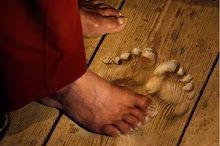
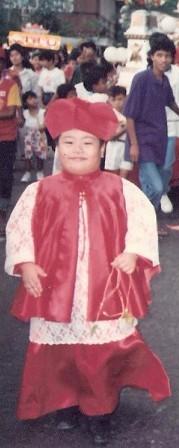
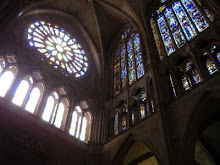
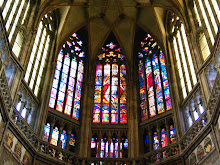
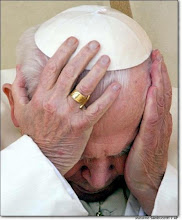

No comments:
Post a Comment